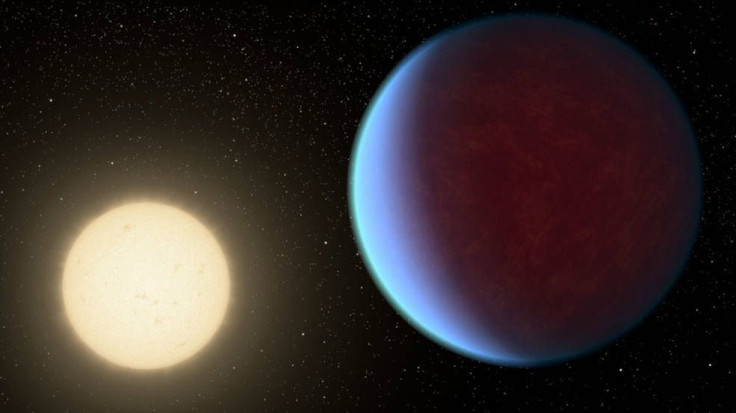Exoplanet 55 Cancri e Has Thick Atmosphere, Rocky Surface Similar To Earth

Exoplanet 55 Cancri e, which is twice as big as Earth, has fascinated us since its discovery. It exhibits several properties that make it very interesting for astronomers to study. The planet is so close to its star that the same side of the planet always faces the star. This means there is permanent day on one side and permanent night on the other.
A new analysis of NASA's Spitzer Space Telescope data from 2016 showed us this planet has an atmosphere with ingredients similar to those of the Earth, but thicker.
Based on a 2016 data from NASA's Spitzer Space Telescope, scientists speculated lava from volcanoes and fissures on this planet would flow freely in the lakes on the side that is lit by its star and the same lava hardens on the side with perpetual darkness.
The 2016 analysis also revealed the lava, on the side that has light, would reflect radiation from the star, which will increase or decrease the overall observed temperature of the planet. Lava lakes exposed directly to space would create local hot spots of high temperatures.
"If there is lava on this planet, it would need to cover the entire surface," said Renyu Hu, astronomer at NASA's Jet Propulsion Laboratory, Pasadena, California, and co-author of a study published in The Astronomical Journal said in a NASA press release. "But the lava would be hidden from our view by the thick atmosphere," he added.
This time, the team used a better model that took into consideration the way the energy flows throughout the planet and radiates back into space. When this model was run, researchers found the night side of the planet is not as cool as previously thought.
The side constantly shielded by sunlight measured up to an average of 2,400 to 2,600 degrees Fahrenheit. The model also estimated the hot side averaged about 4,200 degrees Fahrenheit.
"Scientists have been debating whether this planet has an atmosphere like Earth and Venus, or just a rocky core and no atmosphere, like Mercury. The case for an atmosphere is now stronger than ever," Hu said.
This is because if there was no atmosphere present, the temperature difference would be higher between the hot and cold side. The presence of lava lakes show the average temperature must be much higher and only a thick atmosphere could shield the planet from absorbing more heat.
According to the release, the team said the atmosphere of this mysterious planet could contain nitrogen, water and even oxygen, which is present in our atmosphere. But, the estimated temperature of 55 Cancri e’s atmosphere was found to be with much higher.
The density of the planet is also similar to Earth, suggesting that it, too, is rocky. However the high temperatures mean the planet could never sustain life or water.
Isabel Angelo, first author of the study and a senior at the University of California, Berkeley, worked on the study as part of her internship at JPL and adapted Hu's model to study exoplanet 55 Cancri e.
"It's an exoplanet whose nature is pretty contested, which I thought was exciting," Angelo said.
Why the atmosphere has not been stripped away from the planet, given the perilous radiation environment of the star is one of the questions the team wishes to answer.
"Understanding this planet will help us address larger questions about the evolution of rocky planets," Hu said.
NASA's Jet Propulsion Laboratory, Pasadena, California, manages the Spitzer Space Telescope mission for NASA's Science Mission Directorate, Washington.Science operations are conducted at the Spitzer Science Center at Caltech in Pasadena. Spacecraft operations are based at Lockheed Martin Space Systems Company, Littleton, Colorado. Data are archived at the Infrared Science Archive housed at IPAC at Caltech. Caltech manages JPL for NASA
© Copyright IBTimes 2024. All rights reserved.











